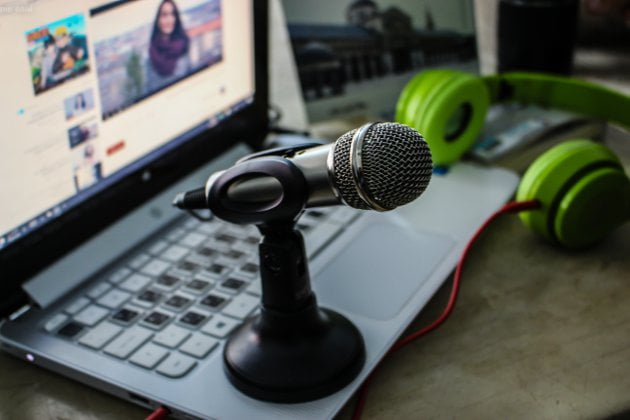Digital Storytelling: A Modern Expression Of Traditional Art

When many of us look back, our happiest times were the evenings with our grandparents eagerly waiting for them to tell us a story. These stories helped us explore the peaks of bravery, the time-tested values of being good human beings, the importance of life skills, and so on.
Most of these story sessions typically conclude with a happy ending and calls of “one more” which turned into a smile of happiness with a promise of a new story the next day. The night was filled with vivid dreams of the great story that grandma told us.
Times have been changed now. This generation is not living with their grandma and it’s a digital age. The internet has entirely changed the way we communicate. It created a revolutionary new matrix: the digital communication ecosystem.
The ancient art of storytelling is being revived into an emerging communication mode, called digital storytelling. Stories are as old as people and are more important than ever for our spirits, minds, and human progress. Becoming good storytellers gives us personal power as we guide, motivate, entertain, educate, inspire, and influence others through the artful use of a story.
Digital storytelling is a modern expression of the ancient art of storytelling. Throughout history, storytelling has been used to share knowledge, wisdom, and values. Stories have taken many different forms.
They have been adapted to each successive medium that has emerged, from the circle of the campfire to the silver screen, and now the computer screen. Telling a digital story combines a narrative, whether it is fiction or nonfiction, personal or general, and digital media. Digital media includes imaging, video, sound, and all other forms of media that can be portrayed visually.
Simply put, the art of digital storytelling is all about telling stories using digital media. For example, a student may want to create a digital story using a video camera and simple video editing software to discuss a major event in their life or even their own family history. Digital tools empower us to bring a new and vibrant dimension to our stories and the ways in which audiences experience them.
Of course, with so many tools available, sometimes, it can be difficult to know where to start. In addition to effectively relaying your story to a wider audience, digital storytelling can convey a sense of innovation and mastery of several different creative tools on the part of the author/creator.
Designing and communicating information requires students to deepen their understanding of content while increasing visual, sound, oral language, creativity, and thinking skills. Making meaning out of experience deepens the communication for both the author and the viewers. The author’s narrative voice is the centre of all the multimedia decisions. The story’s narrative is first made into a voiceover and then all images, sound, music, transitions, and special effects are organised around unfolding this story.
Telling stories together about things that really matter has an extraordinary effect on people. Digital media and digital distribution to the world community are reshaping the power of oral storytelling, enabling us to unfold a highly sensory experience that enhances a narrative voice with images, sound, and music into illuminated understandings. What an experience to incorporate digital storytelling into our classroom and guide a new generation into becoming 21st- century story-keepers, knowing their personal narratives will endure for others long after the fires die down!
Digital storytelling is a powerful tool to integrate instructional messages with learning activities to create more engaging and exciting learning environments. It is a meaningful approach for creating a constructive learning environment based on novel principles of teaching and learning. Thus, this approach has the potential to enhance student engagement and provide better educational outcomes for learners.
Creating digital stories invites students to employ old and new literacies, and through the process of creating a movie, they erect, explore, and exhibit other literacies. A digital story is a multimedia text consisting of still images complemented by a narrated soundtrack to tell a story or present a documentary; sometimes video clips are embedded between images. Creating digital stories acts as a motivator for students, thus they remain engaged throughout the project.
Additionally, digital stories provide an alternative conduit of expression for students who struggle with writing traditional text. Using this multimedia approach in the classroom helps students discover voice, confidence, and restructure their writings.
Another important aspect of digital storytelling is that it is the future of digital marketing
Stories have enthralled audiences across the world. As kids, we loved to listen to stories of kings and queens, fairies and ghosts, jungles, superheroes and monsters, in fact, anything that could feed our little imagination. Then we grew up to watch bigger stories on celluloid and read about real-life heroes in our school history books.
The biggest epic, Mahabharata is also a story well told, timeless and adaptable even today. All the great epics of the world, be it Homer’s Odyssey or the animal fables of Aesop or Panchatantra, the thousand and one tales from the Arabian Nights or the endless plays on human emotions by Shakespeare, are timeless.
While we grew up to have our own favourite stories, the format of storytelling remains unchanged. So, while a Hamlet by Shakespeare is recycled into Haider the movie, the plot is still the hero.

Comments are closed.